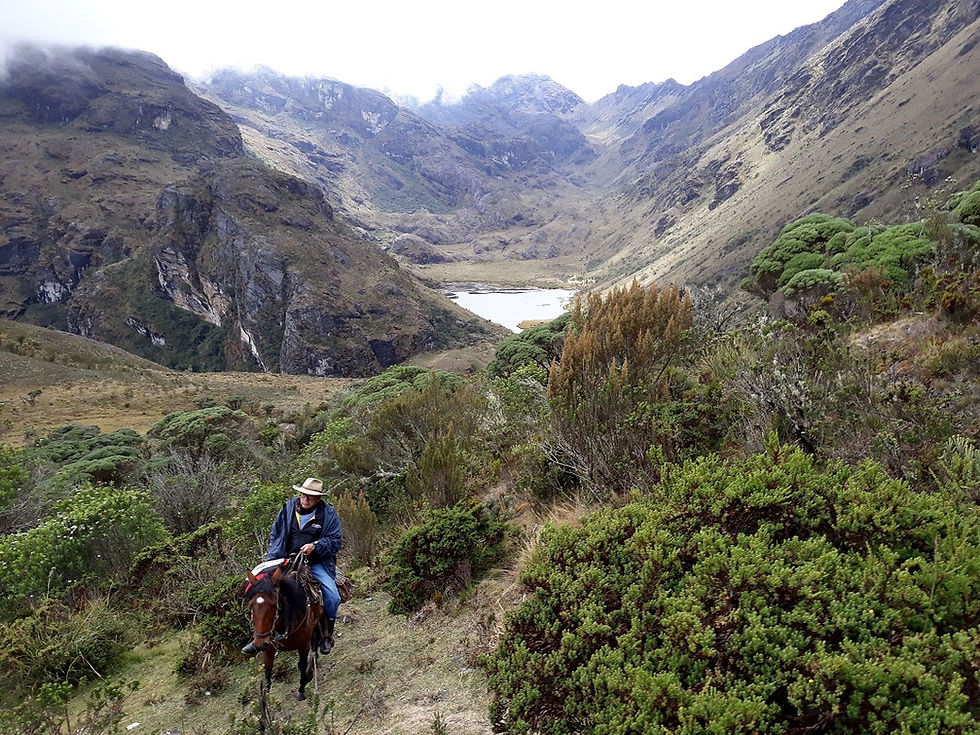
In the Spanish language, horses are caballos. Recently I was staying with a Colombian family who had a large farm in the Andes that had been in the family for generations. It was accessible only on horseback; people and supplies have to be taken up and down the mountain using horses. The horses are mountain bred, they live and work there. They are strong, intelligent and willing, with the ability to climb up and down mountains effortlessly. They’re all bone, muscle and sinew, with no excess fat on them. Most are around 14hh. The size is important, as they need small hooves to be able to find the cracks between rocks and climb, much like mountain goats. It feels like riding a mountain goat too!
This was my first experience riding Colombian caballos and I’m a total convert, they’re amazing. On the way up to the farm (about a three hour ride), night descended. There was a full moon and the most amazing scenery I’ve ever experienced. The horses never faltered and climbed up the rocky tracks even when the track was obscured due to bushes or rocky outcrops. It was an incredible exercise in trust. I was sitting on a horse I’d only just met, La Rosa, and had to trust that she could find the right place to put her hooves in the dark.
That night we slept at the farm, and then the next day went further up to the top of the mountain to find and care for some cattle that lived up there. The horses wanted to run, and we trotted and cantered through the foothills. Then we started climbing. Unlike the night before, now I could see the type of terrain we were crossing, it was hard and rocky. Often the track ran along the edge of a steep drop, with only rock underfoot. The horses were able to clamber up sheer rock faces, with rock underfoot and above, there was little soil on the slopes.
We rested at the top while the cattle were mustered by the farmer, and then their health needs were attended to. The methods used to work with the cattle demonstrated very impressive animal handling skills. These were tough, wild mountain cattle and there was no crush. A lasso and a pole sunk in to the ground was all there was. The cattle were lassoed then tied to the pole to have vaccinations and worming administered. It was hard work and amazing to watch the skill of the handler. The job was done without any rough handling or undue stress to the cattle. The horses nibbled on dry mountaintop scrub and dozed in the sun.
On the way back down the horses were incredible at the rocky drops, somehow getting first one front leg over the edge of the rock, then the next, and finally the hind legs. We held our saddle horns and let them do their thing; to interfere or try and help would only distract them. The drops were often from bare rock onto bare rock. I still don’t understand how they did it. The slopes were frequently 45 degrees or more. At one point my mare was heading steeply straight down the edge of the mountain towards the cliff edge. At the very last moment she veered sharply to the right and continued along the track. This was the only moment where I stopped breathing, I’m a pretty brave rider but this tested me. We ended up calling the day ‘extreme sport horse riding’.
After taking us plus our gear up to the mountain farm the night before, then climbing to the very top the following day, we reached the foothills. And what did the horses want to do? Run! So off we went at a fast canter across totally uneven ground with rocks everywhere. Not one of them missed a beat. I decided not to look at the ground; again my trust in my horse was justified.
I couldn’t help but compare these horses to the ones I know in Australia. Ours would never be run over such ground. Ours would have no idea how to clamber up and down rocky ledges and would definitely expect a big dinner after so much work. These horses were not fed, but released to graze on the mountain grasses. They were so fit and so healthy and so switched on mentally it made our horses look like pampered poodles. I have ridden all my life, and without doubt this was the best ride I’ve ever been on. I will definitely be requesting a visit to the farm next time I go to Colombia!
Suzy Maloney B.Eq.Sc.
Happy Horses Bitless
Lismore, NSW, Australia
Ph: 0401 249 263
Email: happyhorsesbitless@gmail.com
Web: www.happyhorsesbitless.com
Facebook: Happy Horses Bitless Bridles
Comments